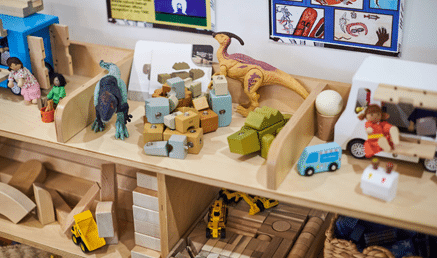
“It’s our polite nudge in the ribs to help you and your team stay organised and on task.”
This week’s subject is: Promoting healthy eating.
Element 2.1.3: Healthy eating and physical activity are promoted and appropriate for each child.
How can your service enhance its strategies for promoting healthy eating to children and families and provide them with current information about recommended dietary guidelines, empowering parents and carers with the knowledge and resources to foster a healthy diet beyond the ECEC service?
Family engagement in healthy eating initiatives can significantly influence children’s long-term food choices and attitudes toward nutrition. When services model and share best practices, they create a ripple effect, encouraging children and families to adopt similar habits at home. This aligns with element 2.1.3 and the requirement for services to promote healthy eating and lifestyle with children and their families. This can be achieved by implementing a range of strategies, including; ensuring thoughtful & robust policies, open communication, positive mealtime environments, and educational activities and experiences that include families.
Promote your nutrition and breastfeeding policies:
Ensure your Nutrition and Breastfeeding policies are comprehensive and remain up to date in line with any regulatory updates and latest research and ensure it reflects your Service’s unique context . It’s important to share these policies with families at the time of enrolment and throughout, during the reviewal process and following any updates. Ensure you seek input and feedback from families when reviewing your nutrition and breastfeeding policies.
Fostering open communication:
Services can promote healthy eating to families by fostering two-way communication, nurturing collaborative partnerships. This begins at the time of enrolment and throughout the child’s time at the Service:
-
- Collect detailed information on each child’s dietary needs, including allergies, intolerances, preferences and cultural or religious requirements and update regularly
- Share resources from recognised authorities, to educate families on healthy eating fundamentals
- Collect feedback from children about their favourite healthy meals from the Service menu and share this feedback and the recipes with families, i.e. recipe of the week/month, could be promoted in your newsletter
- For services where families provide food, offer guidance on packing nutritious lunchboxes, healthy lunchbox food ideas, discouraging discretionary items, while respecting family values. Provide information and resources that highlight the importance of providing lunchboxes that are consistent with the Australian Dietary Guidelines
- Regularly provide families with information about nutritious, low cost, (and convenient) meal and snack ideas to provide at home or for when “on the go”
- Provide information to families on how to read the Nutritional Information Panel on food and drink labels
- Display and share the weekly menu with families on all platforms. Ensure the menu highlights the nutritional value in the foods listed
- Have a checklist next to or on the back of the menu to mark off a source of food from each food group for each meal offered and share this with families
- Ensure the menu is updated and parents are notified when changes are made to the menu
- Include nutritional information about the development of the menu with links to reputable sources
- Information for breastfeeding mothers:
- Share information on the ways in which your Service supports breastfeeding mothers (Breastfeeding Policy)
- Provide information and refer mothers to appropriate resources, including support services offered by NSW (or relevant state/territory) Health, Australian Breastfeeding Association groups or private lactation consultants
- Conduct a nutritional practice survey, inviting families to provide feedback on the menu/food offered
- Host parent workshops or information sessions on topics like introducing solids to infants or creating balanced meals
Mealtimes are a key opportunity to model healthy eating. Educators should sit with children, demonstrating positive attitudes toward nutritious foods and encouraging age-appropriate autonomy in their choices. Ensure mealtimes are relaxed and enjoyable, avoiding placing pressure on fussy eaters while gently introducing new foods. Never use food as a reward or punishment and respond to children’s cues about hunger and feeling satisfied/full.
Extend this to families by sharing photos or stories of mealtime experiences via parent portals, illustrating how children engage with healthy options. This transparency builds trust and inspires similar practices at home. Share with families, information and resources that highlight the significance of family mealtimes, include practical tips for creating positive mealtimes at home.
Embed healthy eating/lifestyle activities in the curriculum. Involve and promote these experiences with families, allowing them to experience shared, lived experience and knowledge:
-
- Consider starting a breakfast club where children prepare a simple healthy breakfast each day. Share these healthy breakfast options with families via your online portal
- Plan a weekly cooking experience with a focus on cooking with natural products and fresh produce. Promote these with families, highlighting the learning outcomes and nutritional benefits, encouraging replication at home.
- Create a food or fruit and vegetable alphabet display
- Plant herbs and/or vegetables at your service. Invite families to participate in the set-up of the herb and vegetable gardens
- Invite families to share nutritious home recipes with the Service community and promote these in your newsletter. Consider inviting parents to participate in a cooking experience at the Service to prepare their home recipe with children
- Share information and resources about growing your own fresh produce. Invite families to share photos of their veggie/herb gardens to create a display/collage with children
- Create individual food group charts, where children draw, or cut out & stick pictures of their favourite foods from each food group.
With your team, reflect on what practices your service currently implements to promote health and nutrition and consider what improvements can be made to strengthen your impact on families, fostering a supportive network towards healthy futures for all children and young people.
Resources for services:
Guide to the NQF- Element 2.1.3: Healthy lifestyle
Munch & Move: Encourage and Support Breastfeeding
Register for Breastfeeding welcome here Service; stickers, posters, and more.
Healthy eating games & activities
Healthy lifestyle programs for schools
Healthy living in Out of School Hours Care
We Hear You blog- Introducing new foods to children in education and care services
Resources for families:
Creating happy family mealtimes- parent tip sheets
Healthy School Lunchbox Planner
Get up & Grow Resources for families
Healthy eating for kids- Fact sheet
Raising children network: Preparing and sharing food 3-6 years, Making family meals enjoyable 2-18 years
Feeding the family on a tight budget
Within System7 go to Quality Area 2/ Module 14 to submit self-assessment notes and if required, open a QIP issue if you identify any areas of improvement.
The Childcare Centre Desktop has a range of resources to assist services with healthy lifestyle. These include Nutrition Food Safety Policy, Breastfeeding Policy, Menu Planning Checklist, Menu template, Nutritional Practice Survey, Nutritional Practices Audit and much more.
Resources, NQS Element, Regulation and System7 links:
Childcare Centre Desktop – Childcare Centre Desktop
National Quality Standard – QA 2/ 2.1.3- Healthy lifestyle
National Regulations – 78, 79, 80, 168
System7 Module – QA 2/ Module 14
If you have any questions send us a note via the Contact page here!




